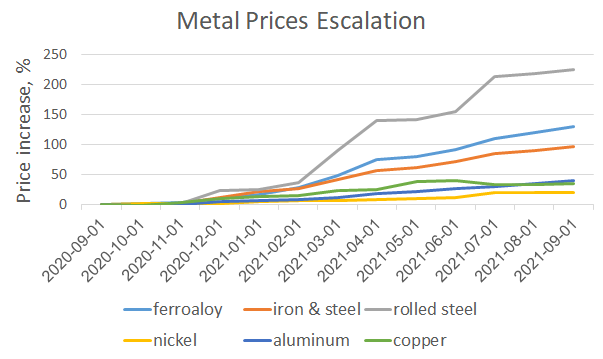
The hardest part of any mega-project business lies with the trade-off between opportunities and risks. Poor prediction methods and inadequate estimation of the project complexity may break a project before it even gets off the ground.
On March 22, 2017 desalination.biz published an update on Rosarito Beach desalination mega-project worth of over US$ 460 million (Baja California, Mexico).
I try not to miss any news of this project as personally I consider the idea of its initiation brilliant in all aspects – economic, technical and commercial. It will not only solve the problem of water deficit, but will boost the area industrial development by adding thousands of new jobs.
Unexpectedly for me, this update labels the project as facing uncertain future. Guess what is the reason? Some insurmountable environmental laws? No. Overdue permits? No. Engineering blunder suddenly surfaced during detailed design? No.
As written in the update, the main reason is significant macroeconomic changes that adversely impacted the estimated construction, operating, and financing costs for the project. In terms of project engineering the same meaning may be expressed as follows.
The project price has not been indexed; the project contract has not included the price adjustment clause (PAC) covering fluctuation of labor, material and equipment prices.
I have listed the project indexation as a major risk source specifically for PPP and BOT contracts in my post "Project Risks".
My personal experience shows that with narrowing project margins only inclusion of PAC ensures fair distribution of risk and reimbursement for work done between both parties – the contractor and the customer.
To prepare PAC by hand is not possible at all - computer program is needed. Crenger builds PAC by a button click.
The update details the company expenses related to the project activities in 2014 – 2016. The figures pose the obvious question – who will cover these expenses? To my understanding, the question would not have been relevant if the project contract had included the liquidated damages curve – another risk source mentioned in my post.
Can this curve be built by hand? Again the answer is negative as this curve is a result of Big Data processing (done by Crenger in the background).
The next case is the Sorek B project (Israel) with the following schedule.
- Submission of bids - Q2 2019
- Selection of winner after financial closure - Q2 2020
- Completion of construction works - Q2 2023

Framework for PAC Auto-generation
Asian Development Bank (ADB) requests adding price adjustment clause (PAC) to any project with the construction time above 18 months. This figure approximately corresponds to the capacity of 80 MLD – the beginning of megaprojects range. The reason of ADB behind promoting this condition is clear – to raise the profitability of borrowed money. In addition PAC improves the chances of the contract winning because it deducts the large portion from the project contingency implicitly used for market price fluctuation coverage and makes it explicitly conditional. Unlike contingency, condition works in both directions of fluctuation. Typically the contingency associated with possible price escalation amounts to 5 – 10% of the project costs, big enough to tip the scales in favor of contractors applying PAC.
Project PAC example given in "Project Risks" post is a collection of some coefficients tied to entries combining product or service name (like copper) and the information source code. LME denotes London Metal Exchange, UBLS – US Bureau of Labor Statistics. This collection may be written in the following canonical form.

Expression in round brackets is the price variation represented as a row of products of constant coefficients Ai and the ratio of Product Price Index Ii defined at the times tn and to. The coefficient A0 describes the non-adjustable portion of the price allocated to the OEM profit and overhead. A0, A1,. are all product specific.
Lack of clear procedures for A and I definitions turns PAC into point for negotiation with the client, having low chance of winning. Take, for example, the A0 coefficient. In early versions of BEAMA's adjustment formulas A0 was set to zero, today it is 0.05. ADB recommendation is 0.15 which I am inclined to consider as the lowest value, with maximum one at 0.3.
Wide-spread opinion is that Eq. C is a consensus between the EPC contractors and the client. Totally wrong assumption introducing risk of corruption and fraud.
Eq. C is not negotiable as it represents fundamental techno-economic relationships. In this respect, we cannot use the above described logic of selecting A0 for the plant ball-park price adjustment. This kind of price is very popular in water industry. For complex systems like a plant, the A0 coefficient is output (defined by all the products and services used to build the plant), rather than input.
This mistake is embedded into current practice of PAC definition. For example, one tender states that "fixed portion shall never be less than 35 percent and the adjustable portion shall never be more than 65 percent of the engineer’s estimate." Often, the provisions are added as to a minimum fluctuation threshold or/and maximum amount for price adjustment.
In other words the plant PAC is a summation result of thousands of PACs for all the P&ID items, control and electrical devices, building and roads. This is a starting point for the framework developed by crenger.com. Its core is the catalog of the A and I pairs for generic classes of equipment. The algorithm scans the P&ID and selects the best match for each item. Then it summates over the plant and produces the resultant PAC. The biggest advantage of this algorithm is that it automatically disregards such entries of the project budget as overhead, profit, insurance, financing, interest during construction, etc.
Let's remember that PAC and Eq. C are different; the former is declaration, the latter is implementation. For example, PAC may state that 20% of the price shall follow the labor cost index variation; it does not explain how the variation is to be calculated and which internet data source shall be used. Experience shows that sources differ in reliability and latency. For the last 10 years roughly 80% of datasets providers discontinued their services or moved to paid subscriptions. Latency may differ from minutes to three months.
In other words, each declaration may have multiple implementations to be switched-over on-the-fly, enhanced by regression analysis, cross-validation and moderate forecasting. Regression analysis is used to adapt the source discrete data to the project flow, cross-validation detects the outliers, and forecasting helps to patch the latency negative effect.
How to define the A1, A2,.. coefficients? Today they are assumed by the domain experts. Subjectivity in the A definition may be seen in BEAMA formulas evolution with time. This approach cannot be automated. To build the rigorous procedure we need to admit that Eq. C is not independent; it is the logic extension and enhancement of cost estimating algorithms used during the project FEED stage for process and other equipment.
Extension deals with new source of data – the cancellation charges curve normally appended together with the manufacturing schedule to the commercial offer. Special algorithms superimpose this curve on the schedule and extract the A1, A2,. coefficients.
The mentioned enhancement is probably the elephant in the room. It deals with the cost estimating platform latency. It is comparable with the plant construction time or even 2 – 3 times bigger. It allows extending the costing formula validity beyond the expiration date. But it is another chapter in crengeneering.
Finally I need to apologize to my reader for not mentioning that Eq. C is not correct at all. Unlike the t0 time, there is no single tn value to be inserted into the equation; every order package is processed at different time. So crenger.com links the PAC framework to the procurement schedule generating one.
